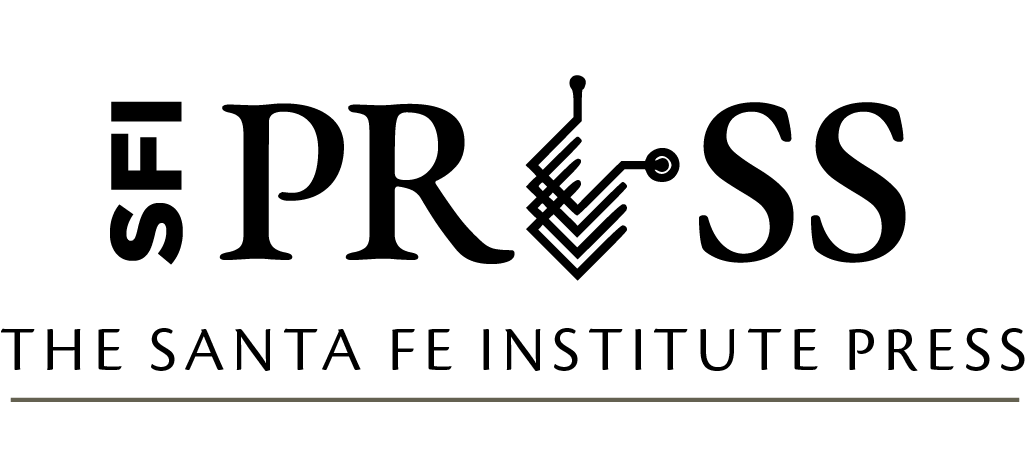Requisite Complexity
Foundational Papers in Complexity Science pp. 1053–1073
DOI: 10.37911/9781947864535.34
Requisite Complexity—A Contemporary View of Cybernetic Control and Communication
Author: James P. Crutchfield, University of California at Davis and Santa Fe Institute
Excerpt
Abstract
This modern perspective on Roger Conant and Ross Ashby’s 1970 article “Every Good Regulator of a System Must be a Model of that System” accounts for advances in nonlinear dynamics, information theory, and computational mechanics. In this way, connecting the original historical effort to the modern, today’s complex-systems research can be appreciated as a revival and extension of Norbert Wiener’s cybernetics.
Much of the interest and, indeed, need for the study of complex systems derives from the simple fact that our world—both natural and artificial—is replete with active, dynamic, adaptive entities that themselves interact. Even more to the point, we humans are enthusiastically changing, updating, and refining our own immediate environment. As is all too well appreciated now, this is both good and bad (Crutchfield 2009). Current impacts and judgments aside, at a minimum there is a need to understand how complex systems work and how to design them to operate the way we need and would like them to function. The main lessons of twentieth- century mathematics and physical theory, though, is that prediction, mechanistic understanding, and design are inherently difficult. Chaotic dynamics (Ott 1993) and self-organization (Cross and Greenside 2009) immediately come to mind as example emergent phenomena that make complex systems supremely challenging.
This all said, these concerns are not even remotely new. There was a historically fascinating period in the mid-twentieth century when it seems to have suddenly dawned on scientists that complex systems existed and were key to scientific, engineering, and even social progress. The mathematician Norbert Wiener (1948) captured this by coining cybernetics as the study of “control and communication in the animal and the machine.”
Bibliography
Ashby, W. R. 1960a. An Introduction to Cybernetics. 2nd. New York, NY: John Wiley & Sons.
—. 1960b. Design for a Brain: The Origin of Adaptive Behavior. 2nd. New York, NY: Chapman & Hall.
Boyd, A. B., D. Mandal, and J. P. Crutchfield. 2016. “Identifying Functional Thermodynamics in Autonomous Maxwellian Ratchets.” New Journal of Physics 18:023049. https://doi.org/10.1088/1367-2630/18/2/023049.
—. 2017. “Leveraging Environmental Correlations: The Thermodynamics of Requisite Variety.” Journal of Statistical Physics 167 (6): 1555–1585. https://doi.org/10.1007/s10955-017-1776-0.
—. 2018. “Thermodynamics of Modularity: Structural Costs Beyond the Landauer Bound.” Physical Review X 8 (3): 031036. https://doi.org/10.1103/PhysRevX.8.031036.
Conant, R. C. 1969. “The Information Transfer Required in Regulatory Processes.” IEEE Transactions on System Science and Cybernetics 5 (4): 334–338. https://doi.org/10.1109/TSSC.1969.300226.
Conway, F., and J. Siegelman. 2006. Dark Hero of the Information Age: In Search of Norbert Wiener, the Father of Cybernetics. New York, NY: Basic Books.
Cross, M., and H. Greenside. 2009. Pattern Formation and Dynamics in Nonequilibrium Systems. Cambridge, UK: Cambridge University Press.
Crutchfield, J. P. 2009. “The Hidden Fragility of Complex Systems: Consequences of Change, Changing Consequences.” In Cultures of Change / Changing Cultures, edited by P. Alsina and J. Perello, 98–111. Barcelona, Spain: ACTAR Publishers.
—. 2012. “Between Order and Chaos.” Nature Physics 8:17–24. https://doi.org/10.1038/nphys2190.
Jaeger, H. 2000. “Observable Operator Models for Discrete Stochastic Time Series.” Neural Computation 12 (6): 1371–1398. https://doi.org/10.1162/089976600300015411.
Leff, H., and A. Rex. 2002. Maxwell’s Demon 2: Entropy, Classical and Quantum Information, Computing. New York, NY: Taylor & Francis.
Loomis, S. P., and J. P. Crutchfield. 2020. “Thermal Efficiency of Quantum Memory Compression.” Physical Review Letters 125 (2–10): 020601. https://doi.org/10.1103/PhysRevLett.125.020601.
Ott, E. 1993. Chaos in Dynamical Systems. New York, NY: Cambridge University Press.
Ruebeck, J., R. G. James, J. R. Mahoney, and J. P. Crutchfield. 2018. “Prediction and Generation of Binary Markov Processes: Can a Finite-State Fox Catch a Markov Mouse?” Chaos: A Journal of Nonlinear Science 28 (1): 013109. https://doi.org/10.1063/1.5003041.
Shannon, C. E. 1948. “A Mathematical Theory of Communication.” Bell Systems Technical Journal 27:379– 423, 623–656. https://doi.org/10.1002/j.1538-7305.1948.tb01338.x.
Upper, D. R. 1997. “Theory and Algorithms for Hidden Markov Models and Generalized Hideen Markov Models.” PhD diss., University of California, Berkeley.
Wiener, N. 1948. Cybernetics: Or Control and Communication in the Animal and the Machine. Cambridge, MA: MIT Press.
—. 1988. The Human Use of Human Beings: Cybernetics and Society. Cambridge, MA: Da Capo Press.
